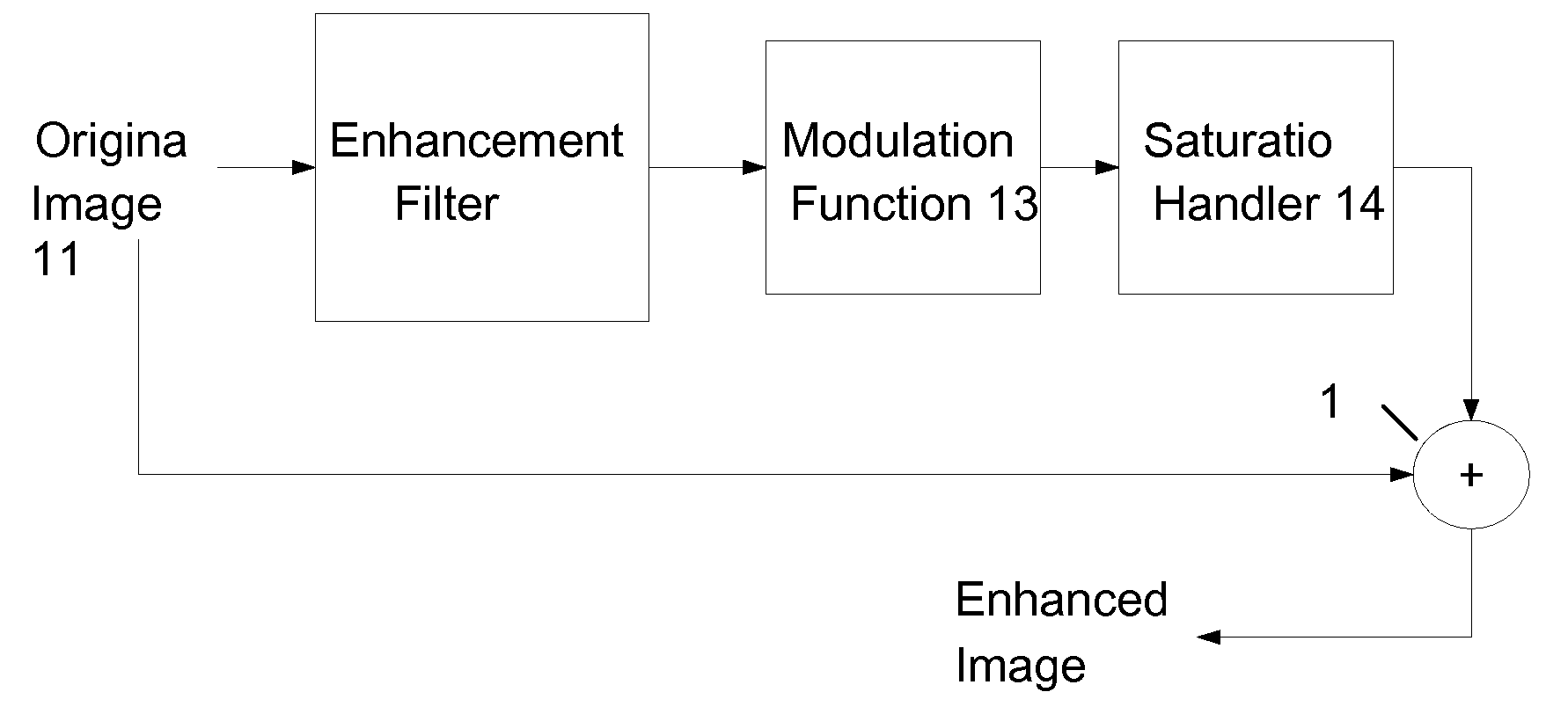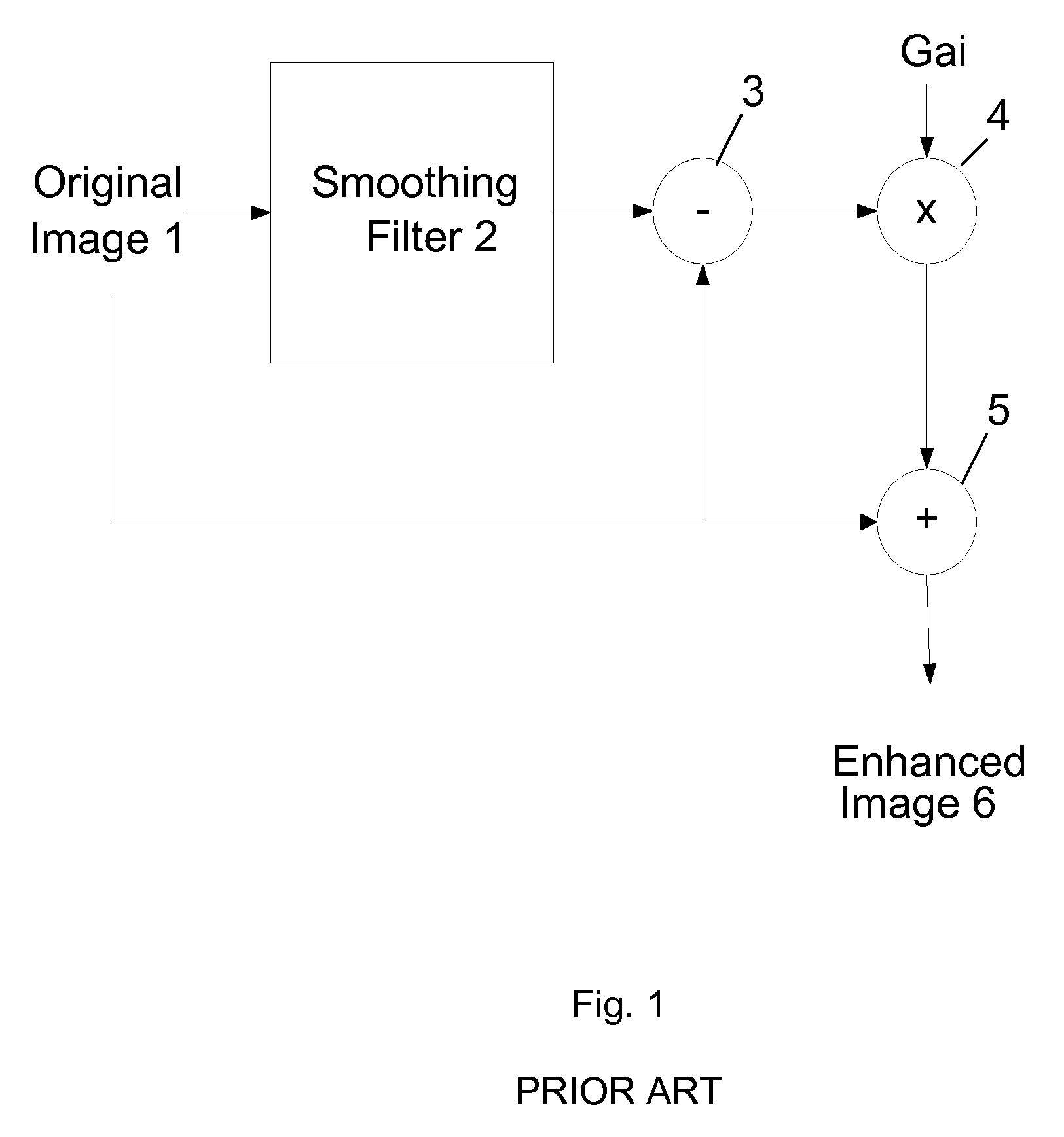Method and apparatus for adjusting the contrast of an image
a technology of contrast adjustment and image, applied in image data processing, color television, television systems, etc., can solve the problems of noise in smooth areas of images, excessive or poor lighting conditions, ringing or overshooting effect around edges or other regions of high contrast, etc., to achieve reduced noise, increase contrast, and computational efficiency.
- Summary
- Abstract
- Description
- Claims
- Application Information
AI Technical Summary
Benefits of technology
Problems solved by technology
Method used
Image
Examples
Embodiment Construction
[0045] Referring to FIG. 2, which shows schematically an overview of an example of a method according to the invention, an original input image 11 is filtered by an enhancement filter 12. As will be explained further below, the enhancement filter 12 is a fixed, non-adaptive filter, i.e. the filter has fixed coefficients that do not change, and operates to output the high frequency component of the original image 11 in a single operational stage.
[0046] The output of the enhancement filter 12 is passed to a modulation function 13, which applies a gain g to the output of the enhancement filter 12. The nature of the preferred gain g will be discussed further below.
[0047] The output of the modulation function 13 is then passed to a saturation handler 14 which operates to avoid saturation of contrast in the enhanced image, again as will be discussed further below.
[0048] Then, the output of the saturation handler 14 is added back to the original image 11 in a summer 15 to obtain the enh...
PUM
 Login to View More
Login to View More Abstract
Description
Claims
Application Information
 Login to View More
Login to View More - R&D
- Intellectual Property
- Life Sciences
- Materials
- Tech Scout
- Unparalleled Data Quality
- Higher Quality Content
- 60% Fewer Hallucinations
Browse by: Latest US Patents, China's latest patents, Technical Efficacy Thesaurus, Application Domain, Technology Topic, Popular Technical Reports.
© 2025 PatSnap. All rights reserved.Legal|Privacy policy|Modern Slavery Act Transparency Statement|Sitemap|About US| Contact US: help@patsnap.com



